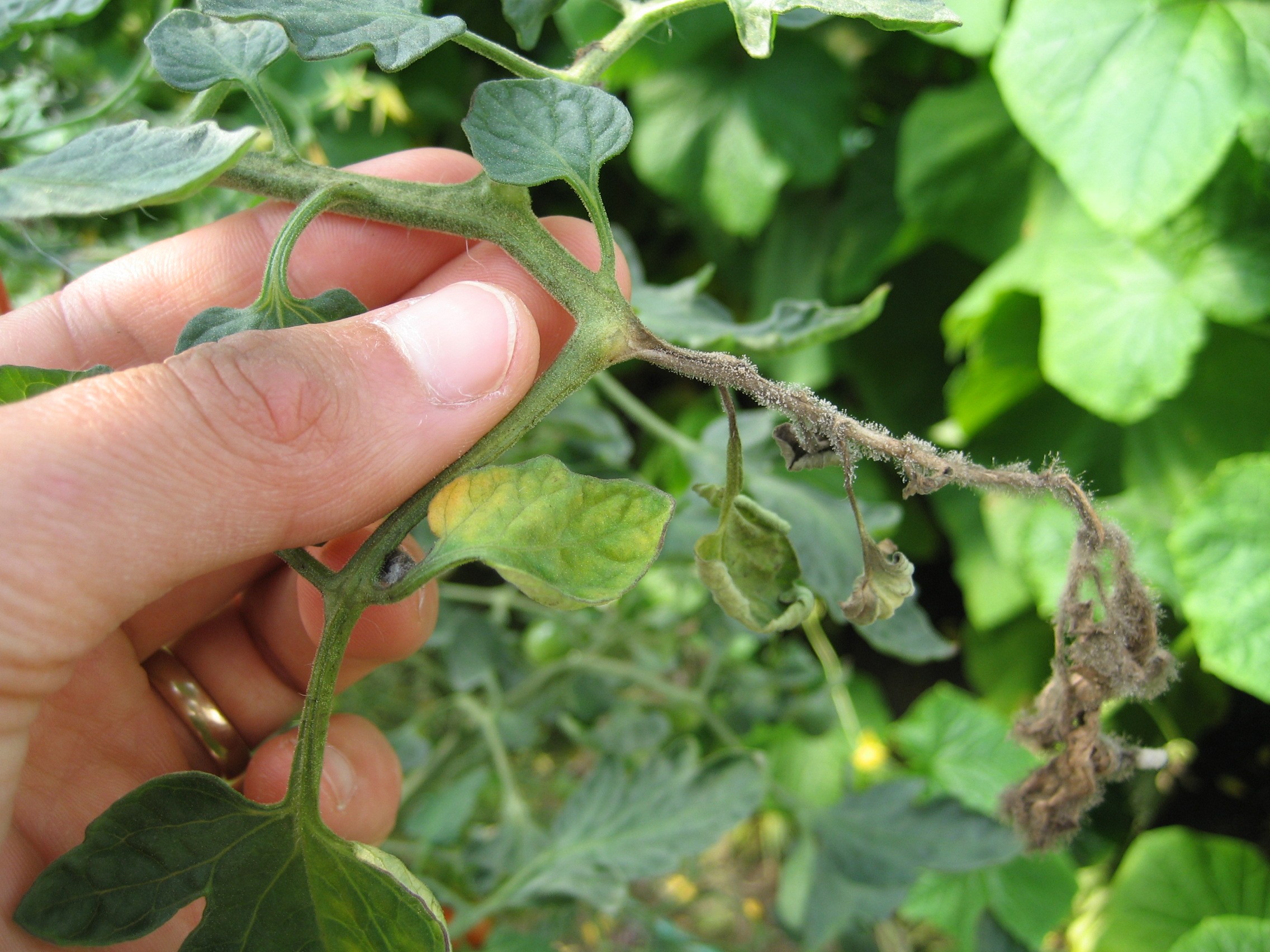Botrytis, or gray mold, caused by the fungus, Botrytis cinerea, can cause significant losses in high tunnel and greenhouse tomato production if not controlled properly.
The pathogen can rapidly spread during periods when structures are closed and when relative humidity remains high for long periods of time.

This often occurs when outside weather remains cool and damp while heating is needed. Gray mold is favored by temperatures from 64° to 75° F and requires only high humidity (not leaf wetness) to become established. The pathogen has a large host range and once established in an enclosed structure it can be very difficult to control (University of Massachusetts). The fungus can survive/overwinter as mycelia or sclerotia in plant debris and in organic soil matter (North Carolina State University).
Botrytis is ubiquitous (e.g., found everywhere) and prefers to attack senescing or injured plant tissue. Botrytis cinerea is an excellent saprophyte as well as a pathogen. This means that any dying or dead tissue on tomato plants (or any other plant in the structure) can easily become infected. The pathogen will attack flowers, fruit (at the stem end of infected fruit or by causing ghost spot), leaves, and stems; importantly, plants that have recently been suckered or pruned.
Stem infections occur during periods of high humidity through leaf scars, cracks, and pruning wounds. Spores can remain dormant for up to 12 weeks within pruning leaf scars and are triggered to germinate during plant stress. Stem lesions may expand in concentric rings to girdle the entire stem causing wilting above the infection site (NCSU).
Botrytis can be controlled by the management of environmental conditions, sound cultural practices, and fungicide applications.
As stated above, gray mold is favored by temperatures from 64° to 75°F and requires only high humidity (not leaf wetness) to become established. Keep relative humidity as low as possible by a combination of heating and venting in the evening, particularly when warm days are followed by cool nights. Maintain adequate airflow with horizontal fans. Avoid the overcrowding of plants.
Maintain proper fertility programs. Run regular tissue tests. Gray mold is known to be favored by low calcium levels. In particular, calcium to phosphorus levels of less than 2:1 may make the tomato plant more susceptible to gray mold (UMASS). Keep floors and structures clean of any plant debris or organic matter. All pruned plant material needs to be removed immediately. Do not work on wet plants, prune plants in the early afternoon allowing wounds to dry quickly (NCSU).
Control options
Controlling botrytis begins with proactive cultural practices, recognizing conditions that are conducive for its development, and symptoms on infected plant materials. There are a number of conventional and organic fungicides labeled for its control in the greenhouse and high tunnel. Please see Table E-11 in the 2020/2021 Mid-Atlantic Commercial Vegetable Production Recommendations Guide.

Greenhouse ventilation
Provide good ventilation, both day and night, to keep plants dry and air humidity low. Good air circulation improves ventilation and reduces the chance of condensation forming. Moving air through the crop helps keep the plant and air temperatures the same.
To improve ventilation:
- open the vents in the greenhouse when temperatures rise to replace warm moist air with cool air
- heat the greenhouse at night to reduce humidity (when heated, air absorbs moisture)
- maintain low humidity at night with a cycle of heating and cooling (plant transpiration where water vapour is released at night causes humidity levels to rise in greenhouses)
- install a humidity sensor to allow automatic opening and closing of the vents.
To improve air circulation:
- use fans to move air within the greenhouse
- choose a plant density that will allow good air movement between the plants
- prune regularly to remove laterals, and old and dense leaves to assist air movement through the plants
- avoid leaf wetness by never spraying crops in the afternoon or at any time if the weather is such that drying by night will be difficult.












